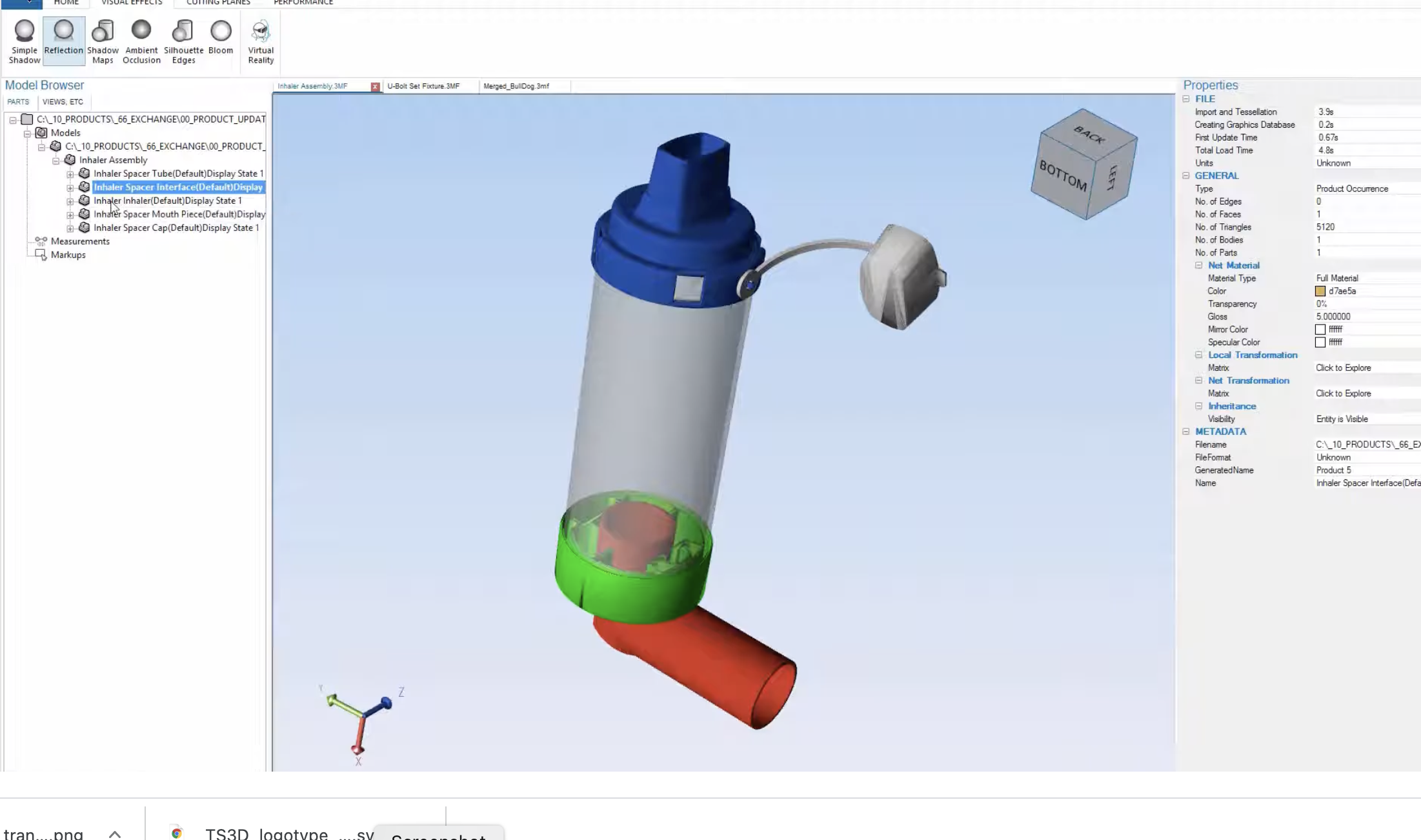Meet 3MF Member, Tech Soft 3D!
Today we are highlighting another 3MF Consortium member’s contributions to 3D Printing and Additive Manufacturing. Our members are the titans in this space! In each post, we will interview a new member company and publish their perspective on the AM ecosystem and their take on how 3MF drives innovation and value.
![]()
Tech Soft 3D is a leading global provider of 3D development tools that help software teams build engineering, building and construction, analysis, and 3D printing applications. Established in 1996 and headquartered in Bend, Oregon, Tech Soft 3D also has offices in California, France, England, and Japan. Their toolkits power 650 unique applications running on hundreds of millions of computers worldwide.
3MF on Tech Soft 3D's HOOPS
Q&A
What are the biggest challenges facing the 3D Printing/AM ecosystem?
The 3D printing industry – also known as additive manufacturing – is booming because it has huge benefits. The ability to print a part onsite or closer to operations—as opposed to that part coming via long, complex supply chains saves time and money, reduces transportation costs, lowers carbon footprints, reduces labor costs, and injects agility into the supply chain.
However, the digital nature of the additive manufacturing process triggers significant industrial property protection concerns. If a spare part is now created via software, across a new and expanding ecosystem, how can we know that part was completed to specification and verified? How do we ensure that the Industrial Property is protected?
What products and services do you provide in the 3D Printing/AM ecosystem?
Tech Soft 3D provides a variety of software development toolkits (SDKs) used by software teams to add value to an existing product or develop a new application. We aim to prevent developers from reinventing the wheel and allow them to focus on their core technology development, be it in Additive Manufacturing, Building and Construction, CAD/CAM, etc. Our most common products for 3D Printing/AM software are:
- HOOPS Exchange enables fast and reliable access to CAD data. This toolkit allows developers to access CAD data from over 30 standard and non-standard file formats such as SOLIDWORKS, Catia, Creo, Inventor, STEP, STL, and most recently, 3MF.
- HOOPS Communicator (web) and HOOPS Visualize (desktop & mobile) are 3d graphics engines used to display print objects in a webpage or an app for desktop or mobile.
- Polygonica is a mesh processing toolkit that offers powerful functions for solving common 3D printing issues such as mesh repair, auto-healing, simplifying, slicing, hollowing out, and generation of lattice structures.
Why did you decide to join 3MF?
We believe that the 3D Manufacturing Format will play a vital role in the future of 3D printing/Additive Manufacturing. With access to information such as advanced materials, colors, and textures alongside information about the printing process, 3MF can transform the additive space for the better. We want to be part of this transformation.
Why do you feel 3MF is important to the 3D Printing/AM ecosystem?
In the early days of Additive Manufacturing, files only needed to store the shape of an object using a triangular mesh in a 3D coordinate system. As 3D Printing/AM matures technically and its needs grow, 3MF delivers increased functionality and flexibility to support new workflows. We see more CAD applications like SIEMENS/NX, PTC CREO, and SOLIDWORKS exporting 3MF, and our users want the same.
What exciting developments do you expect to see in 3D Printing/AM over the coming months or years?
Design tools have traditionally been developed with the intent of manufacturing in a mold or CNC machine. We are excited about applications that put thought into designing for AM as the manufacturing process. Parts can be created and optimized to meet required rigidity, resolution, wall thickness, and material conservation.
There is more to the engineering process than just design and manufacturing. Machine learning for job estimating, stress analysis for optimizing parts, using geometric dimensioning and tolerancing (GD&T), and quality assurance through metrology are engineering disciplines that can improve 3D Printing. We are excited to help software companies support these workflows and innovate with rich CAD data, graphics, and mesh processing tools.

